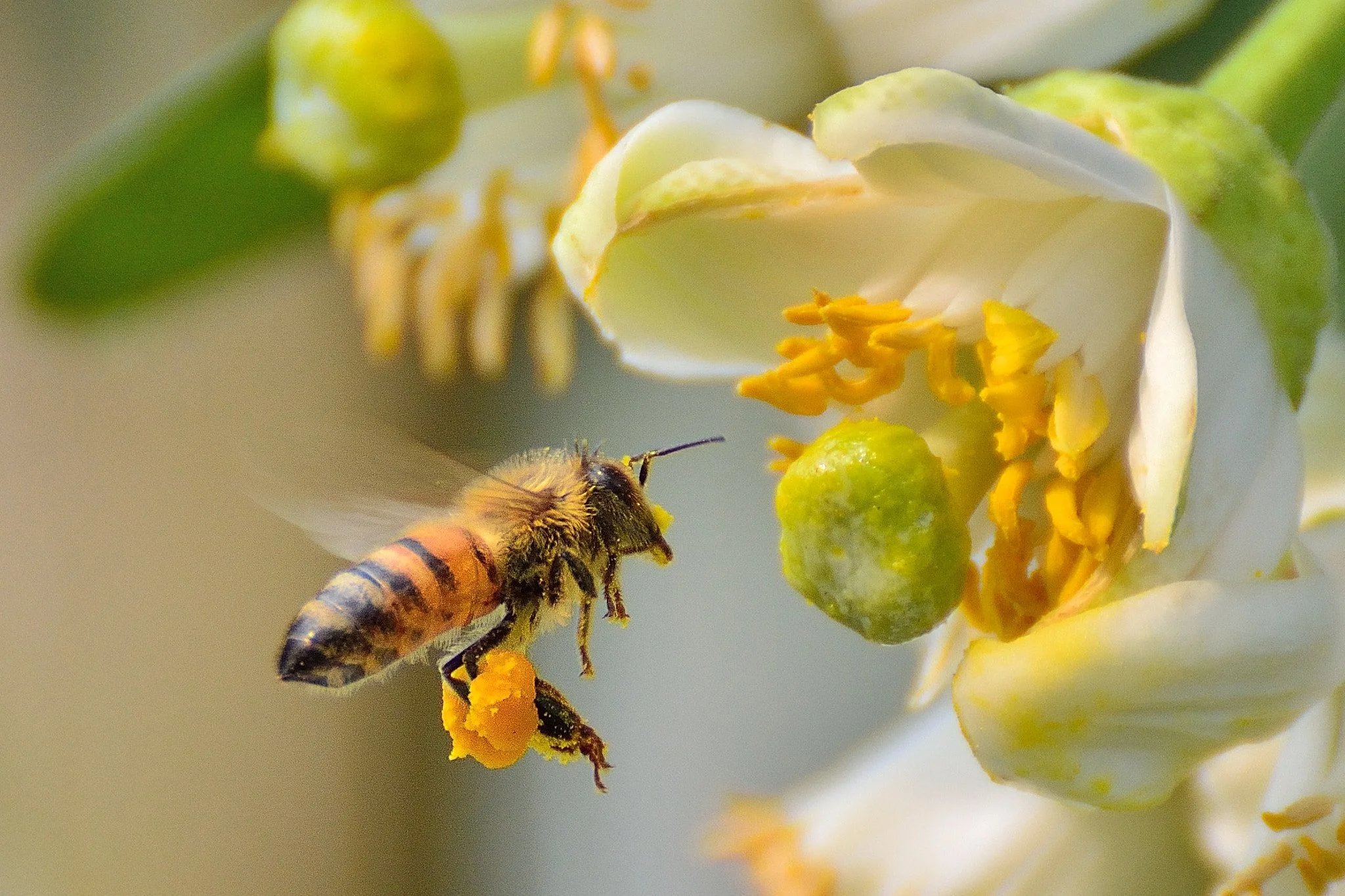Flights
Image from Wiki Commons
By Sam George-Allen
To fly can mean to flee, and so it was flight that brought me here, in the year of the honeybee.
The bees arrived on New Year’s Eve. We were at Ellen and James’s house in the bush, already joyous from the sour beer and the hard sun, when Johnny said in a whisper, Look at the bees!
They had clustered without any of us noticing under the yawing veranda of the oldest shack. There at the junction of a cross beam and the weathered decking hung the bees in a mass the size of a basketball, alive but placid, and they moved like a jelly when one of us rocked the deck with our body weight. With our noses six inches from the swarm, we could see the bees at the top holding on to the grey wood with hardworking little hands: rows of black legs like pen strokes gripping tight while their sisters worked away below them. Something was falling from the point at the bottom of the swarm, something like snow or dandruff, and Amy said, It’s wax! We took turns holding our hands beneath the bees, flakes of wax falling onto our palms, and then we placed them on our tongues and looked at each other in unguarded awe as this miraculous substance clung to our teeth and then disappeared.
When I woke up on New Year’s Day the first thing I did was go and look at the bees. It was six in the morning and everyone else was asleep. I was hangoverless and empty-bladdered; the dog was at a paid pet sitter; the man I thought I loved was asleep, breathing softly, in a puppy pile with our dear friends in the living room. Still in my pyjamas I went lightly down the hill towards the bees. They were busy already, and the hum that greeted me had a note of warning – or so I imagined. I still got up close, and they tolerated me as I breathed and looked and let my early morning thoughts skim about like leaves on a pond. Every bee is her own being. Some are yellower and some are brownish and some have more obvious cartoon stripes than their sisters. They all have those enormous lustrous eyes and those careless wings folded like clear umbrellas along their backs and fur like a sweet friendly animal. It is hard to see it, though, because to be a bee is to be a part of a whole, and it took effort to look at a single animal crawling through the mass. They were working hard. My overwhelming impression was one of great passion and industry, and I felt myself, in the nascent year, become apprenticed to them.
As the rest of us woke and re-entered the world of the living we went one by one or in pairs or trios down to check on the bees. At one point the mass shifted and I thought I glimpsed for a moment the ghostly regularity of the comb they were building within. Later that morning we were eating breakfast and staring at the newly sunlit trees when Sarah called, The bees! and pointed out over the sloping lawn. They had all risen from their place under the deck and were swirling in the sky like a vortex. As one, they had taken flight. It was as though an alarm had been sounded, and each worker in her own world had thrown herself without thought into the air. The sound was incredible. We watched them climb into the sky, and then Ellen said, I think we should go inside, and we all crowded at the windows with our plates of huevos rancheros cooling in our hands to watch them go up, and up, and then just somewhere else.
Once the noise had died down we abandoned our plates and practically ran down to the shack, and yes, there they were, strung from the overhang of the deck like coral: three beautiful combs. An enormous bee, the queen, was still crawling drunkenly around and over and into them. We looked around, wondering where the swarm had gone, whether they would return, what might have caused them to leave. Johnny thought one of the dragonflies we’d seen earlier, the big black bold ones that come alight on you like savage little clockwork flying machines, had buzzed the nest. Maybe the bees had got fed up with a gaggle of moon-eyed giants watching them work. Maybe they had simply realised that something was not right here.
We all leaned in to get a proper look at the combs: one big one in the middle, longer than my hand and shaped like a pandanus fan, and two smaller ones flanking it on either side, all white and raw and unblemished. Like bones, Ellen said.
While the others took turns dipping grass stems into the honeyed chambers of those abandoned combs, I turned and looked at the blank patch of sky where the swarm had flown.
O my sisters, my myriad, small-bodied sisters, I have so much to learn. How to work hard together to make something beautiful; how to abandon it without thought when it becomes clear, for whatever reason, that it is not quite right.

